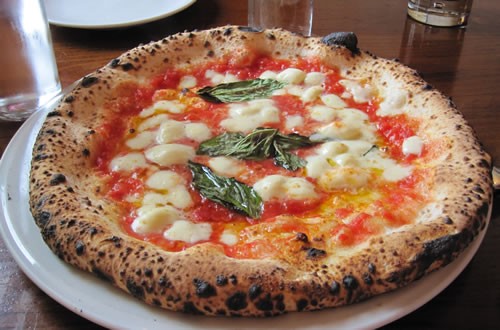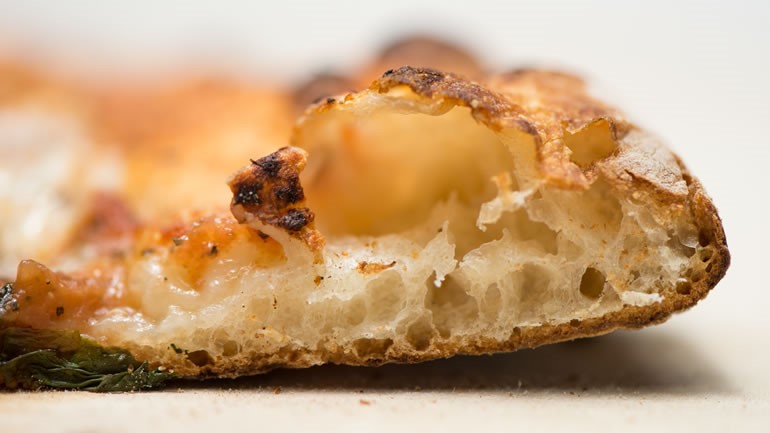
How do I put the pizza in my oven?
If you have a peel, lightly flour it, especially the far edge. If you don't have a peel, the backside of a half-sheet pan will work just fine. The flour acts like ball bearings to help the dough slide off. I recommend a light dusting of semolina, which makes really good ball bearings and adds a special rusticity to the crust. Plop the dough on the peel and make sure it is not sticking. It will shrink a bit while you are adding the toppings; just make sure it is not too large for your stone. Bring one edge of the dough right up to the edge of the peel. This will help you with the transfer to the stone.
This is a Margherita pizza ready to go into the oven.

Now take your peel and lay the edge of the pizza farthest from you on the edge of the stone inside the oven farthest from you. Wiggle and shake the peel and then pull the peel away making sure the pizza slides off of the peel onto the stone. Keep a second peel nearby so you can use it to push and lift the pizza in case it sticks to the peel. Once in the oven, don't wait too long; make sure you keep an eye on the pizza. Some of our ovens cook the pizzas within 30 seconds and don’t be surprised by a burnt crust. The trick here is to get the bottom amber to brown with a few scorched splotches, and still get the toppings cooked. The cheese should be bubbly, but you don't want raw toppings, although some crunch to the peppers and onions is nice. Getting everything cooked properly is controlled not only by heat but also by how you cut the toppings, and you will learn what is best for your preferences and your oven with practice.
You might need to reach in there with the peel and rotate it 45 degrees if one edge is cooking too fast. If you are cooking on a stone in an indoor oven and the bottom is progressing faster than the top, turn off the oven, the stone has plenty of energy stored in it, to speed the cooking of the top. In a professional wood burning pizza oven the pizzaiolo or pizzaiola, the pizza master or mistress, will often slip the pie onto the peel and lift it up near the top of the oven where hot air is trapped to speed the cooking of the toppings.

When it is done, remove it with the peel, or just lift the stone off and bring it to the table. Cut it with a wheel, knife, or even scissors.
Here's a look at a cross section of the cooked crust. You can see it is dark brown and crunchy on the bottom and golden on the top with air pockets that make it light.
